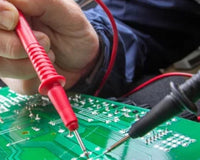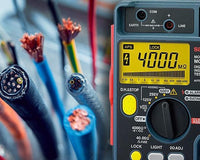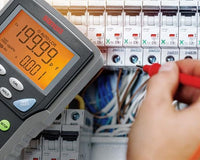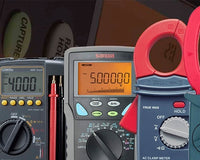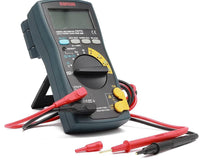Do I need a Multimeter or a Clamp Meter?
Choosing the right type of testing instrument can be a challenge, especially with the market overflowing with different brands and application-specific instruments. Many often find it difficult to differentiate between two very similar instruments such as a Multimeter and a Clamp Meter. Although both meters are designed for unique purposes, there are some similarities both share, as well as features that set them apart.
Multimeter

Multimeters are instruments that can be used to measure various electrical parameters mainly voltage, current, and resistance. Available in either digital or analog types, these devices have variable measuring ranges that can either be adjusted automatically or require manual adjusting using a knob.

A multimeter comes with two test leads that allow users to probe a point of interest to take measurements. They can also be used to measure or detect electric field strength without the need for physically interacting with the source. Some multimeters also offer advanced features such as PC data logging that allows users to log data into their personal computers (ex. Sanwa PC-7000).
When to use a Multimeter?
Multimeters are best used for debugging electronic circuits or measuring electronic component values. They can also be used when testing high-power machinery or devices, depending on their category rating/capability. This tool is widely used by professionals and hobbyists alike, as it caters to all the basic needs in a single device.
Pros:
- Can perform multiple tasks
- Compact design
- Is more accurate, and offers high resolution, measuring in milli units—millivolts, milliamps and milliohms.
Cons:
- Cannot measure high-level current
- Physical contact (using probes or clips) is necessary to take a measurement
Clamp Meter

A clamp meter is an instrument that is specifically designed to measure current. Just as the name implies, this meter has a clamp on the top that can be clamped around any current-carrying conductor to measure the magnitude of current flowing through it.
Unlike a multimeter, it does not require probes to measure current, hence removing the need for making physical contact with the system.
When to use a Clamp meter?
Clamp meters are generally popular in industries or power stations where high-power lines are installed. Since they do not require testing leads to measure current, they are generally considered safe as direct contact is not required.
Pros:
- Allows for safe measurement, as no direct contact
- Can measure high level current values (400 Amperes or more)
- Does not require additional accessories for measurement
Cons:
- Measurements might not always be accurate as no physical contact is being made
- It measures to the nearest tenth or hundredth of a unit, rather than in the milliunits available with a DMM
- Can only perform a single task

Hybrid Clamp Multimeters
A Hybrid Clamp Multimeter is a device that is part clamp meter and part digital multimeter. It can measure high-level AC currents as well as have features such as measuring voltages, resistance, continuity, etc.
Pros
- Features 2 devices in 1
- Can measure high levels of AC current
Cons
- Has limited multimeter features
- Is generally less accurate
- Has higher power consumption


